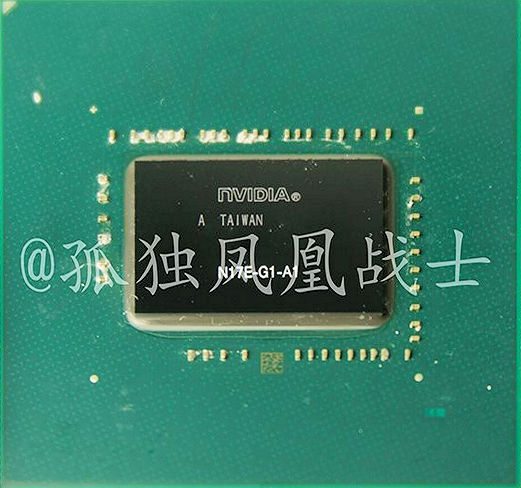At SIGGRAPH 2016, Nvidia showcased a demo of the mobile variant of its revolutionary Pascal-based Quadro GPU. In just a few days from now, Nvidia will unveil its Pascal mobile lineup. NVIDIA’s Pascal is the most powerful GPU architecture bringing in a whole new level of performance and innovate capabilities. Visual Computing on the desktop, in VR, and on-the-go requires this next level of performance and capabilities. As designs become more complex, media becomes richer with higher resolutions and complex visual effects, with VR changing several facets of entertainment, design, engineering, architecture and medicine, Pascal offers the solutions to cope with these challenges.
We already reported GTX 1070 and GTX 1060 Mobile Pascal numbers. This post is about GeForce GTX 1080 Mobile Pascal.
GeForce GTX 1080 Mobile
The GeForce GTX 1080 will be called just that – there’s no suffix ‘M’. So don’t expect to see ‘GTX 1080M’ or ‘GTX 1080 for notebooks’. Similar naming schema means the GeForce GTX 1080 mobile lineup should offer similar performance on both desktops and mobile.
Here’s a comparison of the GeForce 10 Mobile and Desktop Series –
GeForce GTX 1080, 1070 and 1060 Mobile
| Mobile | GTX 1080 Mobile | GTX 1070 Mobile | GTX 1060 Mobile |
| GPU | GP104 | GP104 | GP106 |
| GPU Configuration | 2560:160:64 | 2048:128:64 | 1280:80:48 |
| GPU Clock | ? | 1443 / 1645 MHz | 1405 / 1671 MHz |
| Mem. Clock / Effective | 1250 / 10000 MHz | 2002 / 8008 MHz | 2002 / 8008 MHz |
| Memory Type | 8GB GDDR5X | 8GB GDDR5 | 6GB GDDR5 |
| Memory Bus | 256-bit | 256-bit | 192-bit |
GeForce GTX 1080, 1070 and 1060 Desktop
| Desktop | GTX 1080 Desktop | GTX 1070 Desktop | GTX 1060 Desktop |
| GPU | GP104-400 | GP104-200 | GP106-400 |
| GPU Configuration | 2560:160:64 | 1920:120:64 | 1280:80:48 |
| GPU Clock | 1607 / 1733 MHz | 1506 / 1683 MHz | 1506 / 1709 MHz |
| Mem. Clock / Effective | 1251 / 10008 MHz | 2002 / 8008 MHz | 2002 / 8008 MHz |
| Memory Type | 8 GB GDDR5X | 8GB GDDR5 | 6GB GDDR5 |
| Memory Bus | 256-bit | 256-bit | 192-bit |
As reported by videocardz, according to the leaked product page, dual GTX 1080 Mobile notebook will deliver 9300 points in 3DMark Fire Strike Ultra.
MSI’s unannounced laptop (GT83VR TITAN SLI) offers this description –



Nvidia’s Pascal architecture is based on 16nm FinFET process node. FinFET process nodes are extremely power efficient. As the performance description says, GeForce GTX 1080 is the king of all GPUs, built with ultra-fast FinFET, high-bandwidth GDDR5X technologies. It supports DirectX 12 features to deliver fastest, smoothest gaming notebook experiences.
GeForce GTX 1080 Mobile in SLI mode: Pics
Screenshots of two graphics cards Nvidia GeForce GTX 1080 Mobile connected in SLI mode appeared on Baidu, the “Chinese Google”, as reported by PurePC. The shots are likely from the Clevo laptop P870DM3-G. The GeForce 1080 GTX Mobile GPU boost 3.0 mode is clocked at 1600 MHz.
This is the screenshot of GPU-Z sensor tab –

Below is the screenshot of Furmark –

The mobile GTX will have 2,580 CUDA cores, 64 rendering units and 180 texture units. The mobile versions are expected to have lower TDP, so the laptops equipped with GTX 1080 will draw lesser power as compared to previous generation notebooks.


The above pics clearly show that this in not the MXM format, but custom PCB manufactured by Clevo. There are no visible Nvidia labels.
GeForce GTX 1060 Pic
Additionally, the GTX 1060 mobile has also been pictured. The GTX 1060 features 1280 CUDA cores and 192-bit memory bus. This card’s performance is expected to lie between GTX 970M and GTX 980M. Here’s the pic of the mobile Pascal GP106 GPU named N17E-G1.

In related news, Nvidia showed the advances it had achieved in VR at SIGGRAPH. At the core of practically every PC-based VR system is a Nvidia graphics chip. Nvidia showed the preview of features that will become the world standard across all high-powered VR devices in a couple of years. And at the heart of it all, we may very well see the mobile variant of the P6000 and P5000 Quadro GPU.
